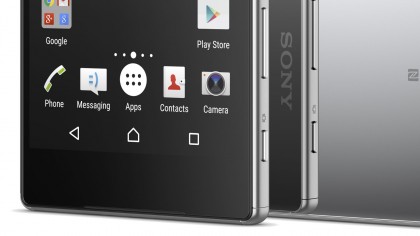Sony Xperia Z5 camera tested in depth
We test the Z5's camera in a range of real-life shooting situations and get some results we weren't expecting
Smartphone photography has progressed beyond simple point-and-shoot snapping. Smartphones are being used as serious tools by serious photographers. Creative smartphone photography is not just a novelty, it's already a fully-formed movement.
This isn't lost on Sony, which is pushing the Z5 camera's power, performance and features for all its worth, or on Apple, which has built photography and picture sharing deep into its hardware and software ecosystem.
So we're entitled to expect a smartphone camera to be good. Not just good 'for a smartphone', but good in an absolute sense.
So here's the thing. The iPhone 6S Plus camera is modest on paper but puts in a performance which belies the numbers. The sensor has only 12 million pixels, but the lens is sharp right to the edge of the frame and details are rendered with clarity and precision, whether they're well-defined man-made outlines (easy for any camera) or subtle, fine textures (much harder).
There are no surprises with the iPhone 6S camera. The manual controls are limited, but the focus/exposure lock options are often all you need. And there are no surprises waiting when you use the different shooting modes. Panoramas are quick and simple to shoot and captured at the sensor's full resolution. If megapixels are your thing, an iPhone panorama is BIG. If you want to apply a photo filter, fine – the camera works just the same with no display lag and no image resampling. Again, you get a full-resolution photo, and you can even change your mind about the filter later.
The Z5 is the opposite. It has double the resolution but its lens and image processing fail to exploit that technical advantage. Where the iPhone delivers more than you might expect, the Z5 delivers less.

Verdict
If you choose the Z5 for its camera you'll find many aspects of its performance very good indeed, including the autofocus, exposure and color rendition. It's a great camera for those who look at images as a whole and don't study the details.
Get daily insight, inspiration and deals in your inbox
Sign up for breaking news, reviews, opinion, top tech deals, and more.
But it has three problems. The first is that the real-world detail rendition is not that good. Small sensors and high pixel counts don't mix, and only the braver camera makers acknowledge this. The Z5 uses noise reduction processes so powerful that delicate textures and patterns are all but obliterated.
The Z5's second problem is that the lens isn't very good either. It's all right in the center of the frame, but at the edges it gets very soft indeed. You wouldn't mind that so much if this was a cheap device, but it's not. The difference between the Sony's lens performance and the iPhone's is clear.
The third problem is the resolution drop you get in the Creative Effects and Panorama modes. They're great in principle, but the results are only fit for on-screen display. We could also mention the overheating alerts (the Z5 did run pretty hot when we were using it) and the screen lag in the effects modes, but enough's enough.
If it's the Z5 you want rather than specifically its camera, then you're probably not going to be disappointed, but if you're looking for the smartphone with the best camera then this – sadly – isn't it.

Rod is an independent photographer and photography journalist with more than 30 years' experience. He's previously worked as Head of Testing for Future’s photography magazines, including Digital Camera, N-Photo, PhotoPlus, Professional Photography, Photography Week and Practical Photoshop, and as Reviews Editor on Digital Camera World.